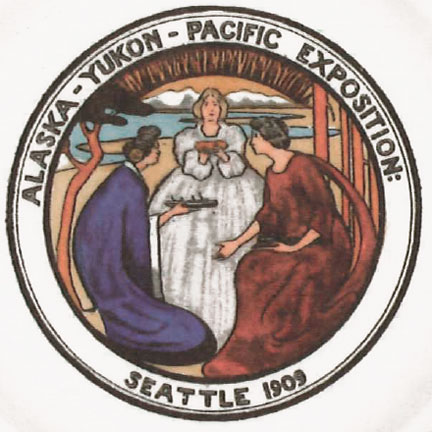The American photographer and artist Adelaide Hanscom Leeson was born 25 November 1875. Adelaide began her career in the “traditional arts” and in the 1890s studied painting with local artists and design at the University of California. Between 1892 and 1900 she contributed her still lifes in pastel, crayon, oil and watercolours to the exhibits at the California State Fair in Sacramento and at the Mechanics’ Institute Fair in San Francisco. In 1896, the San Francisco Call reproduced her sketch entitled Coos River-Oregon; two years later she exhibited her miniatures painted on ivory at the San Francisco Art Association and briefly established a studio on Pine Street in that city. Between 1900 and 1902 she studied at the California School of Design in San Francisco’s Mark Hopkins Institute of Art now known as the San Francisco Art Institute under Arthur Mathews, Alice Chittenden, and Frederick Meyer, but did not graduate believing it to be unimportant. In tandem with her formal education she studied photography in private with her former classmates Emily Pitchford and Laura Adams, who had recently established their own photographic studio. She also is known to have frequented the home of photographer Anne Brigman and is thought to have learned some of her printing technique from her.
After setting up a photographic studio in San Francisco with fellow photographer Blanche Cummings, she was one of the first people to use photos to illustrate literary works. Soon they were accepting commissions for portraits and commercial work. A commentary that year in Camera Craft declared that Hanscom’s “forte lies in her ability to combine graceful lines and a somewhat original lighting, with the rendering of texture in drapery and flesh tints in soft, mellow lights that are particularly effective.” Adelaide’s first awards in photography were two second prizes, one for the portrait The Latest Novel and the other for the cloud effect A Winter Sunset, at the 1901 Channing Club Exhibition in Berkeley.
She became a member of the California Camera Club and sold her landscape studies of the Kern River Canyon to Sunset magazine. At the Third Photographic Salon in San Francisco in 1903, Hanscom exhibited five prints, including the highly acclaimed portrait study of Louise Keeler and her baby entitled Mother and Child. One critic said her showing in this exhibition “secured her a place among the foremost pictorialists of the Pacific Coast.” This show was also important to Hanscom because it was the first place she would have seen prints by Alfred Stieglitz, Edward Steichen and Gertrude Käsebier, who were the leaders of the pictorial photography movement in New York.
As a result of her recent acclaim, her artistry was in high demand. She was so successful that when a newspaper critic asked her if her profession financially rewarded her, she replied “Handsomely”. Over the next two decades her photos were exhibited nationally and abroad, receiving great acclaim and several awards.
In late 1903 she began working on a series of photographs to illustrate the classic selection of poems, The Rubaiyat of Omar Khayyam. The concept of illustrating a literary work with fine art photographs was new at that time, and The Rubaiyat was one of the very first American books in this genre. She solicited some then well-known California literary figures, including Charles Keeler, Joaquin Miller, George Sterling and George Wharton James, as models for the project. She saw the project as both a classic literary publication and as a metaphor for her times. She said decided to illustrate The Rubaiyat because it presented “an expression of the struggle of the human soul after the truth, and against the narrowing influence of the dogmatic religions of our time.”




1905 she published the first edition of The Rubaiyat, and it became a national sensation. Her hometown newspaper proclaimed “The Berkeley Girl whose ‘Omar’ photos startle the literary critics.” At the Liverpool Exposition in England she received a silver medal and the “greatest attention” for her photo-illustrations in the 1905 Boston edition of The Rubaiyat. Due to the high demand several more editions followed, including a 1914 volume with full-page colour plates. The early editions of the book credited only Leeson as the photographer, while later editions said “photographic illustrations by Adelaide Hanscom and Blanche Cummings”.

Today the work is recognised for its lush beauty and because the first edition is thought to be one of the first publications in America depicting male nudity in photographs.
In 1906, however, the San Francisco earthquake struck and her studio, along with all of her negatives, were destroyed in the resulting fire. She then moved to Seattle to start again and worked on illustrations for Elizabeth Barrett Browning’s sonnets. She designed the emblem for the Alaska-Yukon- Pacific exposition, married and had two children and struggled to maintain her practice. Her husband died in WW1 and her father soon after; Adelaide was wracked with grief, became unstable and stopped taking photographs. Tragically, Adelaide Hanscom died in a hit-and-run accident in 1931; her legacy was mainly forgotten and her extraordinary work has only recently been re-appraised.
